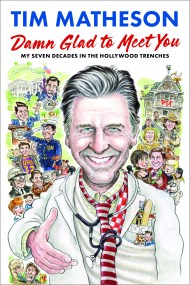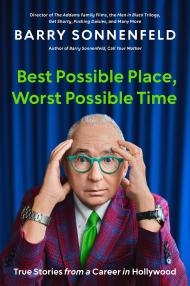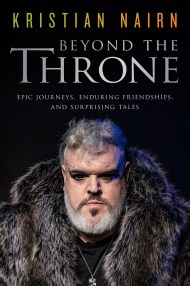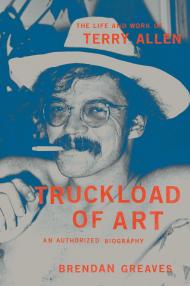Promotion
Use code BEST25 for 25% off storewide. Make sure to order by 11:59am, 12/12 for holiday delivery!
By clicking “Accept,” you agree to the use of cookies and similar technologies on your device as set forth in our Cookie Policy and our Privacy Policy. Please note that certain cookies are essential for this website to function properly and do not require user consent to be deployed.
Crosby, Stills, Nash and Young
The Wild, Definitive Saga of Rock's Greatest Supergroup
Contributors
By David Browne
Formats and Prices
- On Sale
- Apr 7, 2020
- Page Count
- 480 pages
- Publisher
- Da Capo
- ISBN-13
- 9780306922633
Price
$21.99Price
$28.99 CADFormat
Format:
- Trade Paperback $21.99 $28.99 CAD
- ebook $15.99 $20.99 CAD
- Hardcover $44.00 $55.00 CAD
- Audiobook Download (Unabridged)
This item is a preorder. Your payment method will be charged immediately, and the product is expected to ship on or around April 7, 2020. This date is subject to change due to shipping delays beyond our control.
Buy from Other Retailers:
-
NEW YORK TIMES BOOK REVIEW, "BEST MUSIC BOOKS OF THE SUMMER"
THE CHRISTIAN SCIENCE MONITOR, "TOP PICK"
FORBES, "COOLEST CALIFORNIA GIFTS FOR DAD!" -
"The interwoven tale of four of the rock and roll era's most beloved, influential, and controversial stars, David Browne's Crosby, Stills, Nash and Younghas it all: the great songs, the terrible feuds, the drugs, the love, the money, the damage done, and the spark that never quite dies. A clear-eyed portrait not just of four singer-songwriters but of the rise, triumph, and collapse of their generation's idealistic youth. Smart, poetic, and probing, the book is a revelation."Peter Ames Carlin, author of Bruce and Homeward Bound: The Life of Paul Simon
-
"Few rock and roll sagas are as genuinely epic as this one, in which, over nearly five decades, four enormous talents/egos come together, find musical perfection, and fall apart in seemingly unlimited ways. With unparalleled skill and wry insight, David Browne chases down the details of CSNY's unique collaboration, uncovering larger truths about creativity and collaboration, debauchery and recovery, and a generation's harmonizing heart."Ann Powers, author of Good Booty: Love and Sex, Black and White, Body and Soul in American Music
-
"The long, tangled, thorny story of CSNY requires a writer of David Browne's immense skill to unravel, and he delivers beautifully. Sympathetic without being fawning, as astute a critic as he is a conscientious reporter, Browne chronicles the lives and music of these four iconic artists with unfailing intelligence, humor, and grace. This is a riveting read from beginning to what may or may not be the end of this fascinating band."Anthony DeCurtis, author of Lou Reed: A Life
-
"A vivacious journey into a collision of four oversized egos-three of them producing a harmony as strange and inspired as any in rock and roll, a fourth achieving work of such strange and stunning genius that the world has yet to catch up. Beneath those harmonies was much clangor and static, even more than we knew, and Browne captures it all in this magnificent and definitive book."David Yaffe, author of Reckless Daughter: A Portrait of Joni Mitchell
-
"[Browne] appears to have talked to nearly every living soul with a part to play in the band's long career. . . . An excellent portrait of a troubled partnership ... celebrates those fine moments when the band merged to make such epochal songs as 'Suite: Judy Blue Eyes' and 'Ohio.'"Kirkus Reviews (starred review)
-
"[An] ultimate deep dive into rock and roll's most musical and turbulent supergroup."Werd.com
-
"Riveting."People Magazine
-
"[Written with a] sharp eye and even hand... [this] isn't the first book on Crosby, Stills, Nash & Young, and it won't be the last, but it's certainly the best."No Recess
-
"Crosby, Stills, Nash & Young is for music lovers, but it should also be required reading for students of group dynamics."Washington Post
-
"An exhaustive biography of the frictional quartet ... As a document of how art, commerce, decadence and monstrous egos intertwine, Browne's book could be a set text."Mojo
-
"Browne has written the book that CSNY fans have been waiting for a long time (with a long time gone) ... A worthy, substantive, and comprehensive look at the saga of the rock group with a name like a law firm."Houston Press
-
"Browne's book gives a definitive look at the 20th century American rock supergroup."Ears to the Ground Music
-
"The meticulous detail in Browne's book provides the most wide-ranging and in-depth treatment we have of CSNY, and Crosby, Stills, Nash & Young: The Wild, Definitive Saga of Rock's Greatest Supergroup ably lives up to the promise of its subtitle."No Depression
-
"Painstakingly detailed ... truly absorbing."Forbes
-
"David Browne's biography chronicles the story of arguably the most talented, yet most dysfunctional, band in rock history. That such beautiful, groundbreaking music could emerge from such chaos is a testament to the alchemy of talent and creativity."ChristianScience Monitor, "Top Pick"
-
"This is one of the great rock and roll stories. It's like a Greek myth. .... Browne is very good on the tribulations of David Crosby - his addiction, imprisonment, re-entry and subsequent elevation as a battered talisman."NewYork Times Book Review, "Summer Reading 2019"issue
-
"The most comprehensive biography of the group to date ... Browne compiles a fun and fast-paced music history.... an authoritative chronicle."PublishersWeekly
-
"Incisive and astute."Times Literary Supplement
Newsletter Signup
By clicking ‘Sign Up,’ I acknowledge that I have read and agree to Hachette Book Group’s Privacy Policy and Terms of Use







